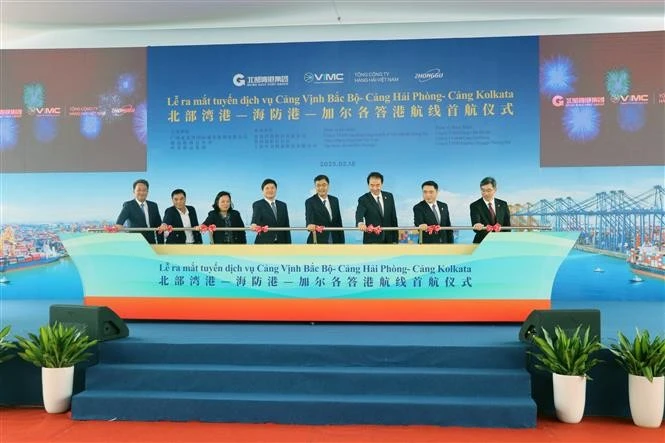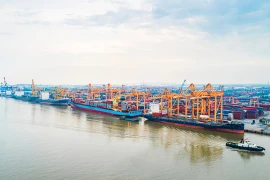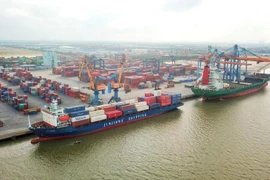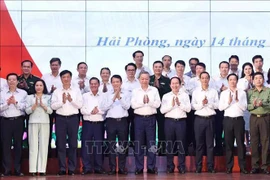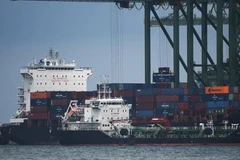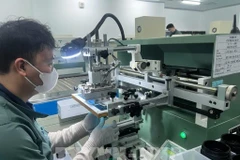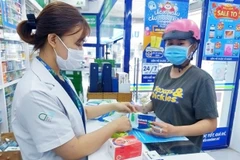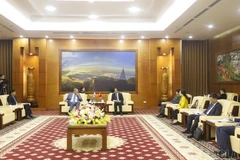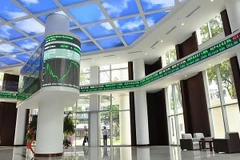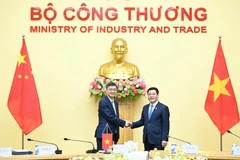Hai Phong (VNA) – The Vietnam Maritime Corporation (VIMC) partnered with Guangxi Beibu Gulf Port Group of China on February 18 to launch a new container shipping route connecting the ports of China’s Beibu Gulf, Vietnam’s Hai Phong and India’s Kolkata.
The first public container shipping service between Beibu Gulf Port and Hai Phong Port is poised to facilitate seamless trade among China’s Guangxi, northern Vietnam, eastern India and even Bangladesh. It will see the export of Chinese goods such as glass, paper products, and energy storage batteries, while imports comprise wood chips, starch, spices, sandstone, and food products.
VIMC Deputy General Director Le Quang Trung hailed the launch as an important milestone for the regional maritime industry, describing it as a strategic gateway that will unlock new trade opportunities involving China, Vietnam and India.
This route is destined to become a key strategic trade axis, contributing to the sustainable growth of both the regional and Vietnamese maritime industries, he said.
Liu Shengyou, General Manager of Guangxi Beibu Gulf Port Group, said the move not only bolsters bilateral relations but also fosters integration between China’s Belt and Road Initiative (BRI) and Vietnam’s “Two Corridors, One Belt” framework, contributing to building the China-Vietnam community with a shared future that carries strategic significance.
Guangxi Beibu Gulf Port Group Co., Ltd., a major state-owned enterprise in Guangxi, is on track to achieve a container throughput exceeding 10 million TEUs this year. Its strategic cooperation framework agreement signed with VIMC last year has already borne fruit with the successful launch of this shipping service, which operates one trip every three weeks.
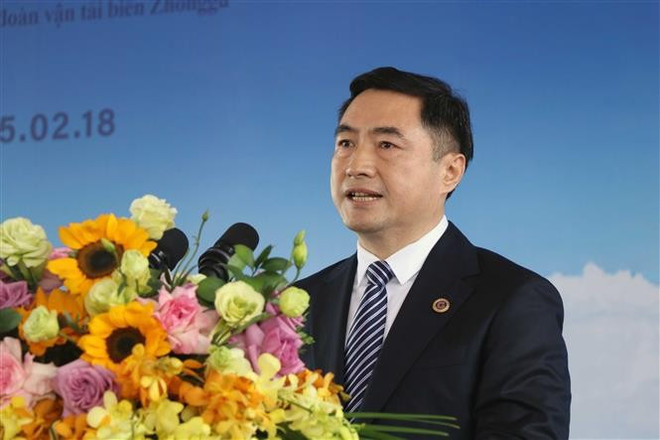
Liu Shengyou, General Manager of Guangxi Beibu Gulf Port Group, speaks at the launch. (Photo: VNA)
In 2024, China solidified its position as Vietnam's largest trade partner, with trade volume surpassing 200 billion USD. Vietnam, in turn, has been Guangxi's largest trade partner for 26 consecutive years.
Liu noted his belief in the potential of this public shipping service, which will facilitate transshipment through Beibu Gulf Port and Hai Phong Port. This development creates a new transportation and trade channel for provinces along China's New International Land-Sea Trade Corridor, as well as significantly benefits the industrial sectors of Vietnam and eastern India./.
Liu Shengyou, General Manager of Guangxi Beibu Gulf Port Group, said the move not only bolsters bilateral relations but also fosters integration between China’s Belt and Road Initiative (BRI) and Vietnam’s “Two Corridors, One Belt” framework, contributing to building the China-Vietnam community with a shared future that carries strategic significance.
Guangxi Beibu Gulf Port Group Co., Ltd., a major state-owned enterprise in Guangxi, is on track to achieve a container throughput exceeding 10 million TEUs this year. Its strategic cooperation framework agreement signed with VIMC last year has already borne fruit with the successful launch of this shipping service, which operates one trip every three weeks.
In 2024, China solidified its position as Vietnam's largest trade partner, with trade volume surpassing 200 billion USD. Vietnam, in turn, has been Guangxi's largest trade partner for 26 consecutive years.
Liu noted his belief in the potential of this public shipping service, which will facilitate transshipment through Beibu Gulf Port and Hai Phong Port. This development creates a new transportation and trade channel for provinces along China's New International Land-Sea Trade Corridor, as well as significantly benefits the industrial sectors of Vietnam and eastern India./.
